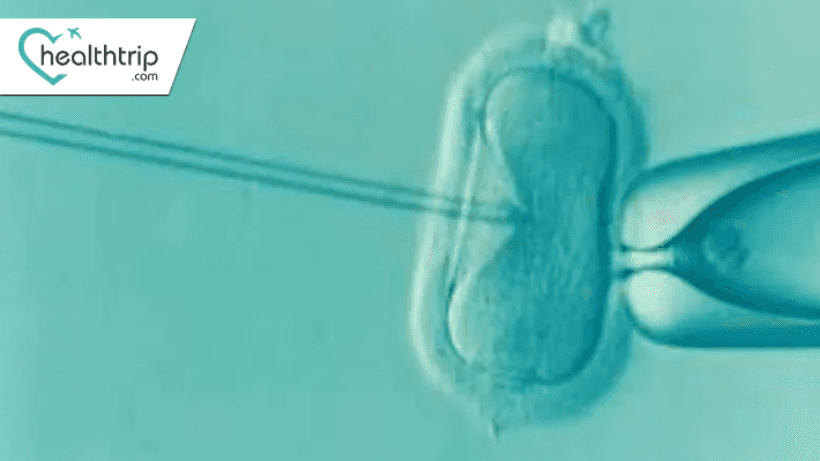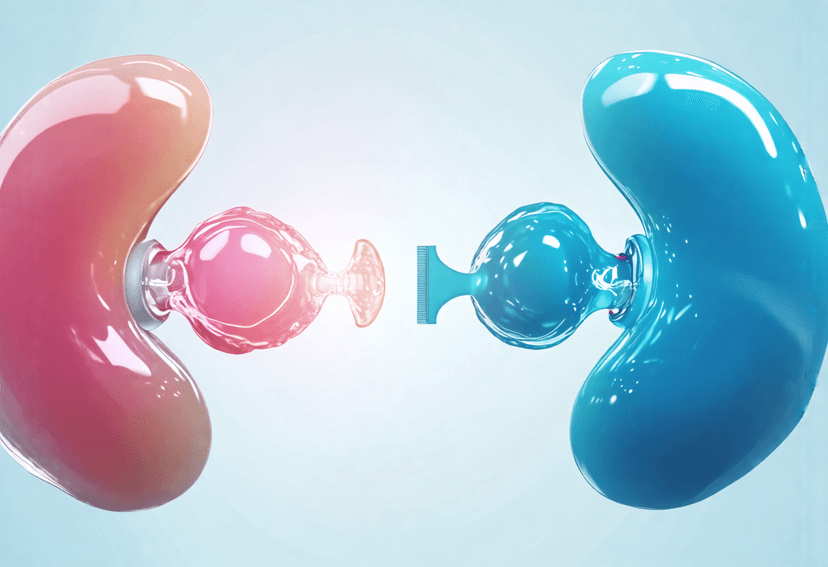
Know about GIFT and ZIFT procedures
27 Sep, 2023
 Healthtrip Team
Healthtrip TeamWe aim here to discuss an important topic that touches upon the values of generosity and the significance of technology in our lives. We will delve into the world of GIFT and ZIFT procedures, exploring their definitions, importance, purpose, and the occasions that call for their implementation.
Most popular procedures in India
Let's begin by understanding what exactly GIFT and ZIFT procedures entail. In essence, these procedures refer to the processes associated with the transfer of life's most precious gift - the gift of human life itself.
Wellness Treatments
Give yourself the time to relax
Lowest Prices Guaranteed!

Lowest Prices Guaranteed!
Gift Procedures, also known as Gamete Intrafallopian Transfer, involve the transfer of eggs and sperm directly into the fallopian tube. This method allows for natural fertilization to take place within the woman's body, promoting a more natural conception process.
On the other hand, Zift Procedures, or Zygote Intrafallopian Transfer, involve the transfer of a fertilized embryo into the fallopian tube. This method is often employed when there are concerns about the embryo's development in the uterine environment, aiming to provide a more optimal setting for implantation.
Explore more: Embryo Transfer in IVF: The Key to Fertility Success
You may also like to read: Fallopian Tube Cancer: Symptoms, Causes, and Treatments
Now, let's consider the importance and purpose of these procedures. The significance lies in their ability to offer hope and the chance of parenthood to individuals and couples facing fertility challenges. Gift and Zift procedures provide an avenue for those who may have otherwise struggled to conceive naturally. They serve as a beacon of hope for couples yearning to experience the joys of parenthood.
Moreover, these procedures also play a vital role in the realm of reproductive medicine, advancing our understanding of fertility and human reproduction. The knowledge gained through these procedures contributes to the development of new techniques and treatments, benefiting not only those directly involved but also future generations.
When and Why it is Done?
Lastly, let's touch upon when and why GIFT and ZIFT procedures are performed. These procedures are typically considered when conventional methods of assisted reproduction, such as in vitro fertilization (IVF), have not yielded successful results. Couples facing issues like tubal blockages, unexplained infertility, or male factor infertility may find these procedures to be a viable option.
The decision to undergo GIFT and ZIFT procedures is a deeply personal one and is often driven by the strong desire for a child. These procedures empower individuals to take control of their reproductive journeys, offering a chance to fulfill their dreams of parenthood.
In conclusion, GIFT and ZIFT procedures represent a ray of hope for those facing the challenges of infertility. They symbolize the relentless pursuit of life and the boundless possibilities that modern medicine can offer. As we continue to advance in the field of reproductive science and technology, let us remember the profound impact these procedures have on the lives of countless individuals and families worldwide. Through compassion, science, and determination, we can ensure that the gift of life is accessible to all who seek it.
we will delve deeper into the intricacies of the Gift procedure, formally known as Gamete Intrafallopian Transfer. This remarkable reproductive technique has provided hope and happiness to countless individuals and couples struggling with infertility.
Let's explore what Gift is, its indications, the candidates it serves, the preparation involved, the procedure itself, post-Gift care, as well as its benefits and potential risks in detail .
Zift Procedure (Zygote Intrafallopian Transfer) and Gift Procedure (Gamete Intrafallopian Transfer)
A. What is Gift (Gamete Intrafallopian Transfer)?
Gift, or Gamete Intra fallopian Transfer, is a fertility treatment method that involves the direct transfer of both eggs (oocytes) and sperm into the woman's fallopian tube. The objective is to facilitate the natural fertilization process within the body, as opposed to traditional in vitro fertilization (IVF) which occurs outside the body.
B. Indications for Gift (Gamete Intrafallopian Transfer) ?
Gift is typically considered in cases where traditional fertility treatments have not been successful. Common indications include:
- Tubal blockages or damage that prevent eggs and sperm from meeting naturally.
- Unexplained infertility, when the cause of infertility cannot be determined.
- Male factor infertility, where sperm may have difficulty fertilizing eggs on their own.
C. Candidates for Gift (Gamete Intrafallopian Transfer) ?
Candidates for Gift are individuals or couples facing the above-mentioned indications. It may also be recommended for those who prefer a more natural approach to conception.
D. Preparation for Gift (Gamete Intrafallopian Transfer) ?
- Ovulation Induction: Before Gift, the woman usually undergoes ovulation induction. This involves medications to stimulate the ovaries and increase the number of available eggs for fertilization.
- Sperm Collection and Preparation: Sperm is collected from the male partner or a sperm donor and processed to ensure its viability for fertilization.
E. The Gift (Gamete Intrafallopian Transfer) Procedure
1. Oocyte Retrieval:
- Once the eggs have matured, an egg retrieval procedure is performed, typically under sedation or anesthesia.
- Eggs are carefully aspirated from the woman's ovaries using a thin needle guided by ultrasound.
2. Insemination:
- In the laboratory, the retrieved eggs are combined with the prepared sperm to facilitate fertilization.
- Fertilization is monitored, and the formation of zygotes is confirmed.
3. Oocyte Transfer to Fallopian Tube:
- A laparoscopic procedure is performed under general anesthesia.
- A small incision is made in the woman's abdomen to access the fallopian tube.
- Using a specialized catheter, the fertilized eggs (zygotes) are gently transferred into the fallopian tube.
- The incision is closed, and the procedure is completed.
4. Post-Gift Care
- After the Gift procedure, the woman may be monitored for a brief period to ensure there are no immediate complications.
- Rest may be advised before being discharged.
G. Benefits of Gift (Gamete Intrafallopian Transfer) Procedure
The gift procedure offers several benefits:
- It provides a more natural approach to conception.
- It can be a suitable option for individuals with specific fertility challenges.
- It offers the potential for successful fertilization and pregnancy.
H. Risks and Complications of the Gift (Gamete Intrafallopian Transfer) Procedure
While Gift can be highly effective, it is not without risks and complications, including:
- The risk of multiple pregnancies, which may require careful management.
- The possibility of ectopic pregnancy, where the embryo implants outside the uterus.
- As with any medical procedure, there are inherent risks associated with surgery and fertility medications.
The Gift procedure stands as a testament to the incredible strides made in reproductive medicine. It offers renewed hope to those facing infertility challenges, allowing them to embark on the journey of parenthood. However, it's crucial to understand both the potential benefits and risks associated with Gift, and to make informed decisions under the guidance of medical professionals.
We will explore another remarkable assisted reproductive technology known as the Zift procedure, or Zygote Intrafallopian Transfer. Zift offers hope to those facing infertility challenges by facilitating the transfer of fertilized embryos into the fallopian tube, where natural implantation can occur. Let's delve into the details of what Zift is, its indications, candidates, preparation, the procedure itself, post-Zift care, as well as its benefits and potential risks.
A. What is Zift (Zygote Intrafallopian Transfer)?
Zift, or Zygote Intrafallopian Transfer, is a fertility treatment method that involves the transfer of a fertilized embryo into the woman's fallopian tube. This procedure is designed to mimic the natural course of fertilization and early embryo development.
B. Indications for Zift (Zygote Intrafallopian Transfer)
Zift is typically considered in cases where other fertility treatments have not been successful. Common indications include:
- Tubal blockages or damage that prevent natural fertilization.
- Unexplained infertility, where the cause of infertility is not clear.
- Couples with a preference for a more natural approach to conception.
C. Candidates for Zift (Zygote Intrafallopian Transfer)
Candidates for Zift are individuals or couples facing the above-mentioned indications. Zift is often chosen by those who desire a more natural reproductive process or have specific challenges related to tubal function.
D. Preparation for Zift (Zygote Intrafallopian Transfer)
- Ovulation Induction: As with other assisted reproductive techniques, women may undergo ovulation induction to stimulate the ovaries and increase the number of available eggs for fertilization.
- Oocyte Retrieval: Mature eggs are retrieved from the woman's ovaries through a minor surgical procedure, often guided by ultrasound.
E. The Zift Procedure (In Vitro Fertilization to Fallopian Tube Transfer)
1. Fertilization in the Laboratory:
- After egg retrieval, the eggs are combined with sperm in the laboratory to facilitate fertilization.
- Fertilization is confirmed by the presence of two pronuclei in the zygote (the early stage of embryo development).
2. Zygote Transfer to Fallopian Tube:
- In a separate surgical procedure, a small incision is made in the woman's abdomen under general anesthesia.
- A laparoscope (a thin, lighted tube) is inserted to access the fallopian tubes.
- Using a specialized catheter, the fertilized zygotes are carefully transferred into one of the fallopian tubes.
- The incision is closed, and the procedure is completed.
3. Post-Zift Care
- After the Zift procedure, the woman may be observed for a brief period to ensure there are no immediate complications.
- The woman may be advised to rest for a short time before being discharged.
G. Benefits of Zift (Zygote Intrafallopian Transfer) Procedure
The Zift procedure offers several benefits:
- It provides a more natural approach to conception by mimicking the natural course of fertilization.
- It can be a suitable option for individuals with specific fertility challenges, especially related to tubal function.
- It offers the potential for successful fertilization and pregnancy.
H. Risks and Complications of Zift (Zygote Intrafallopian Transfer) Procedure
However, it's essential to be aware of potential risks and complications associated with Zift, including:
- The risk of multiple pregnancies, which may require careful management.
- The possibility of ectopic pregnancy, where the embryo implants outside the uterus.
- As with any medical procedure, there are inherent risks associated with surgery and fertility medications.
In conclusion, the Zift procedure stands as a testament to the remarkable advances in reproductive medicine. It provides renewed hope and possibilities to individuals and couples facing infertility. When considering Zift, it's vital to consult with medical professionals who can provide guidance and support throughout the process.
Comparison of Zift and Gift Procedure
Similarities in Zift and Gift Procedure
1. Assisted Reproductive Technologies (ART)
ZIFT and GIFT:
2. Surgical Egg Retrieval
ZIFT and GIFT:
3. Involvement of Fallopian Tubes
ZIFT and GIFT:
4. Anesthesia and Invasive Nature
ZIFT and GIFT:
5. Timing with the Menstrual Cycle
ZIFT and GIFT:
6. Follow-Up and Monitoring
ZIFT and GIFT:
In summary, ZIFT and GIFT share several crucial steps that are intrinsic to the ART processes, from the initial stages of ovarian stimulation and egg retrieval to the ultimate goal of achieving a successful pregnancy. The specifics of each step are meticulously coordinated and require significant medical oversight, which is common to both ZIFT and GIFT treatments.
Differences in Zift and Gift
Zygote Intrafallopian Transfer (ZIFT) and Gamete Intrafallopian Transfer (GIFT) are both assisted reproductive technologies that help couples conceive. Here are the aspects and differences between the two methods:
1. Process of Fertilization:
- ZIFT: Fertilization occurs in vitro, which means that the egg and sperm are combined in a laboratory setting. After fertilization, the resulting zygote is transferred to the fallopian tube.
- GIFT: Fertilization occurs inside the body. Both the sperm and the eggs are placed directly into the fallopian tube, allowing fertilization to happen naturally within the body.
2. Timing of Embryo Transfer:
- ZIFT: The transfer of the zygote into the fallopian tube is typically done within 24 hours after fertilization has been confirmed.
- GIFT: The transfer is done immediately after the eggs are retrieved and mixed with the sperm; there is no wait to confirm fertilization.
3. Indications for Use:
- ZIFT: Often used when there is a clear cause of infertility, such as damaged or blocked fallopian tubes, or when other methods like in vitro fertilization (IVF) have failed.
- GIFT: It may be recommended for couples who have unexplained infertility, mild male factor infertility, or women who have at least one functioning fallopian tube.
Must read : IVF Treatment and Female Infertility
4. Success Rates:
- ZIFT: The success rates for ZIFT are similar to those of IVF and can be influenced by the age of the woman, the reason for infertility, and the quality of the sperm.
- GIFT: The success rate of GIFT is often compared to that of IVF, but it may be slightly lower because fertilization is not confirmed before the transfer.
5. Invasiveness and Complexity:
- ZIFT: This method is more invasive than GIFT because it involves an additional step of confirming fertilization in the lab before transferring the zygote to the fallopian tube.
- GIFT: It is considered less invasive because it skips the laboratory fertilization step. However, it still requires egg retrieval and laparoscopic surgery to transfer the gametes into the fallopian tubes.
6. Laboratory Intervention:
- ZIFT: Involves more manipulation in the lab, as the embryos are observed and grown for a short period before being transferred.
- GIFT: Minimizes laboratory intervention since the gametes are transferred directly to the fallopian tubes without waiting for laboratory confirmation of fertilization.
7. Emotional and Ethical Considerations:
- ZIFT: Some couples may prefer ZIFT as the fertilization occurs outside the body, which may raise certain ethical considerations similar to those with IVF.
- GIFT: It is sometimes chosen for religious or ethical reasons by couples who prefer that fertilization occur naturally within the body.
8. Cost:
- ZIFT: Typically more expensive than GIFT due to the additional laboratory work required to monitor fertilization.
- GIFT: May be slightly less expensive than ZIFT, but still costly because of the need for surgical retrieval of eggs and sperm, as well as laparoscopic transfer.
9. Availability and Popularity:
- ZIFT: Less common than GIFT and IVF, as IVF has improved over the years, making ZIFT less necessary.
- GIFT: Also less common than IVF, as the latter allows for more control over the process of fertilization and the opportunity to screen embryos for genetic conditions.
10. Timeline and Monitoring:
- ZIFT: Requires close monitoring after zygote transfer to ensure that implantation occurs, similar to IVF.
- GIFT: Requires careful timing and monitoring to ensure that egg retrieval coincides with the natural cycle, but implantation is not monitored as closely as in ZIFT.
Related Blogs

Bourn Hall: Pioneers in Fertility Care and Beyond
Learn about Bourn Hall's groundbreaking approach to fertility care and

Revolutionizing Fertility Treatment: A New Era at Bourn Hall
Discover how Bourn Hall is changing the game in fertility

Unravel the Mysteries of Fertility with IERA Lisbon Experts
Get personalized fertility guidance from IERA Lisbon's renowned experts

Conquering Infertility: A Journey with Art Fertility Clinics and Healthtrip
Get the best fertility care with Art Fertility Clinics and

Hope After Heartbreak: Overcoming Infertility
Discover how World IVF Centre can help you overcome infertility

How Salpingectomy Affects Fertility and Pregnancy
Understand the impact of salpingectomy on fertility and pregnancy










